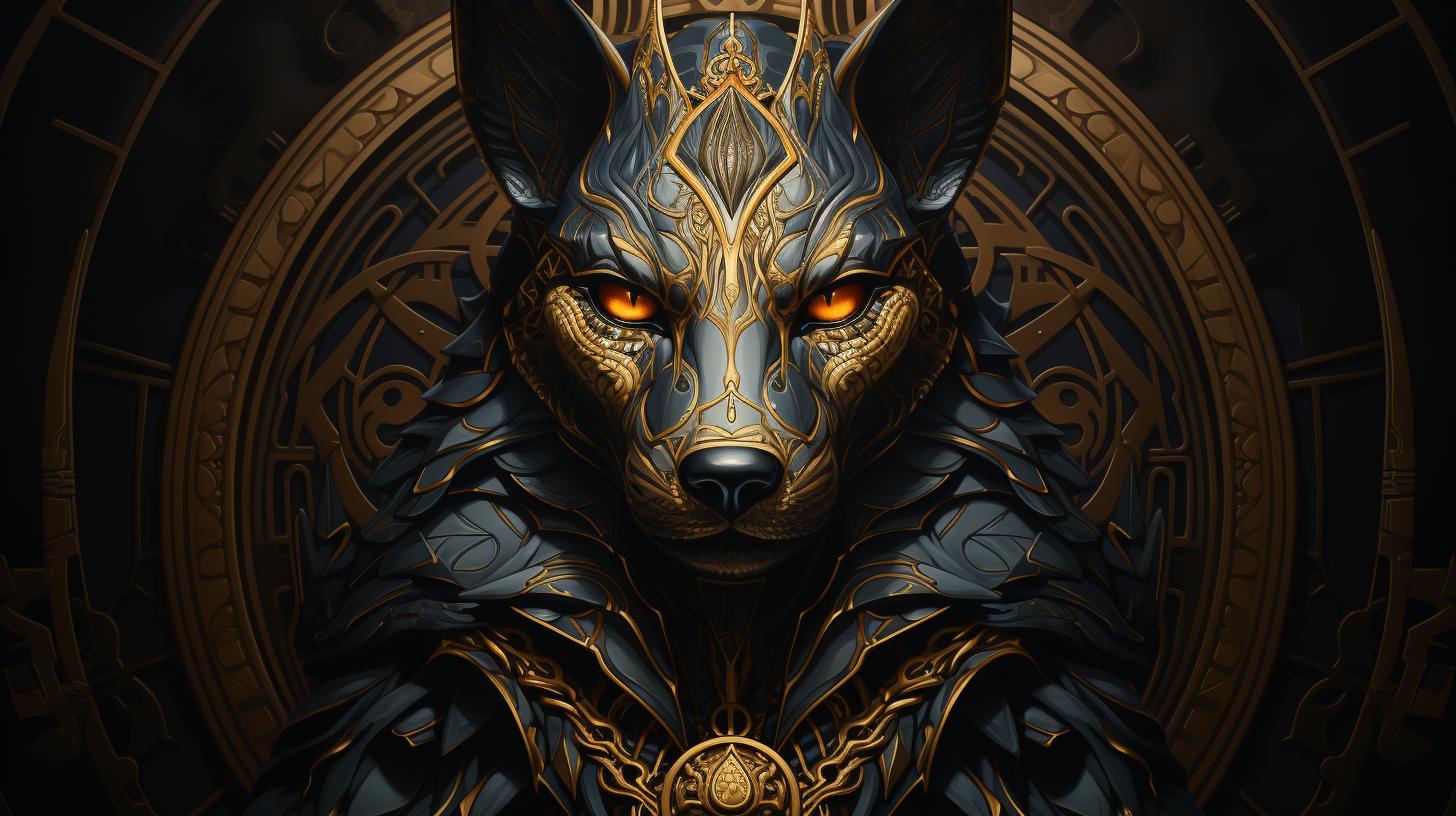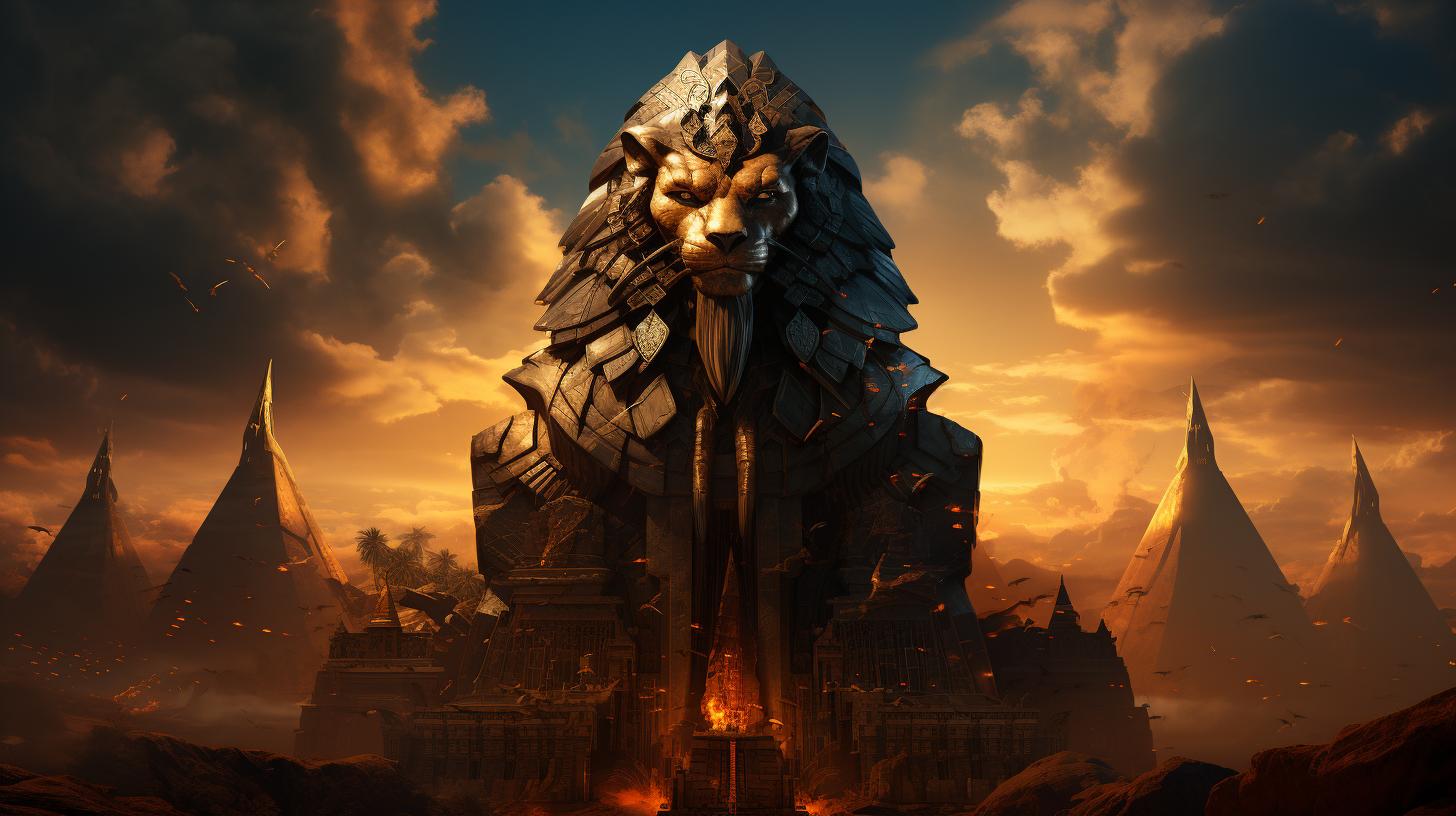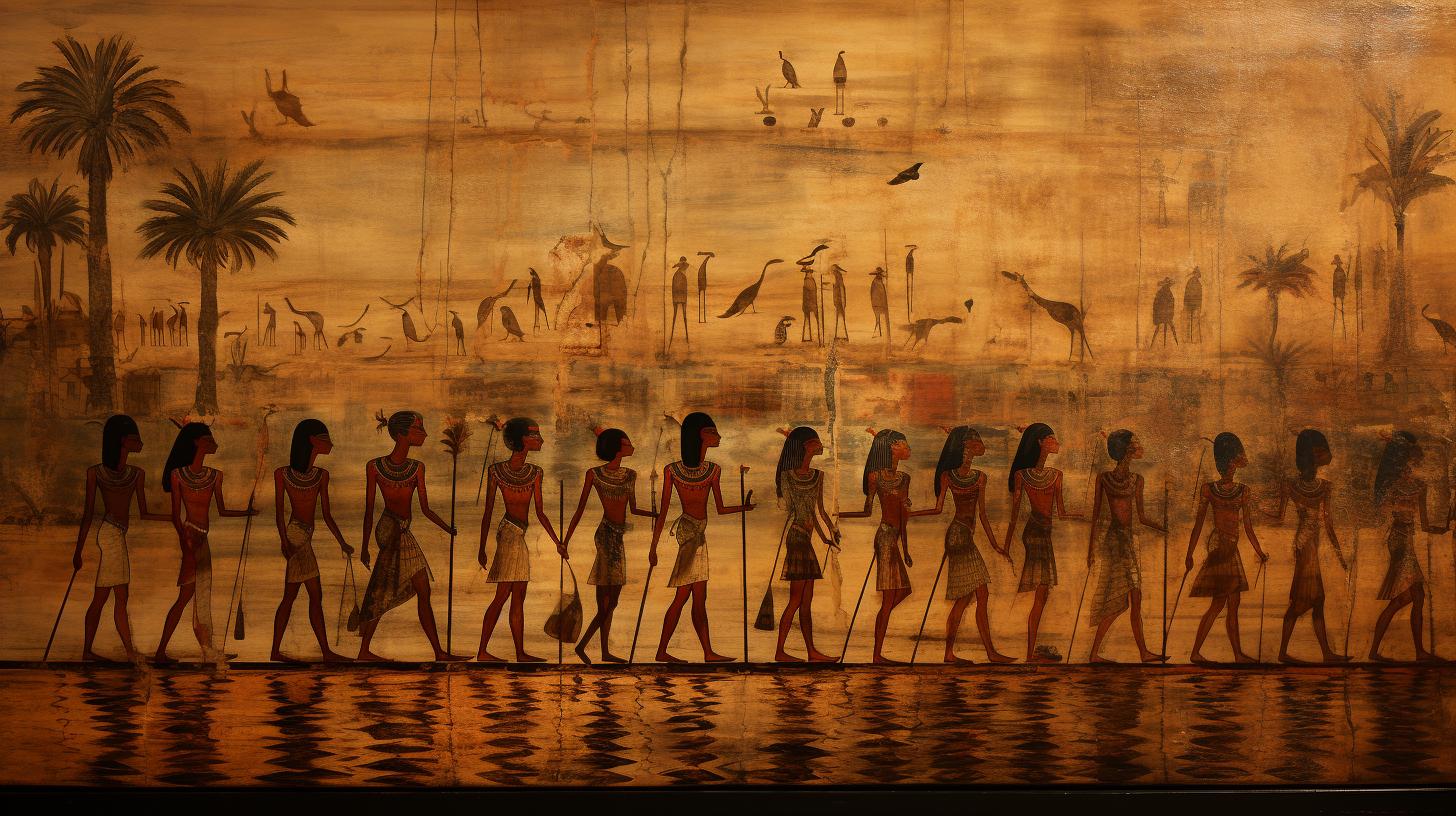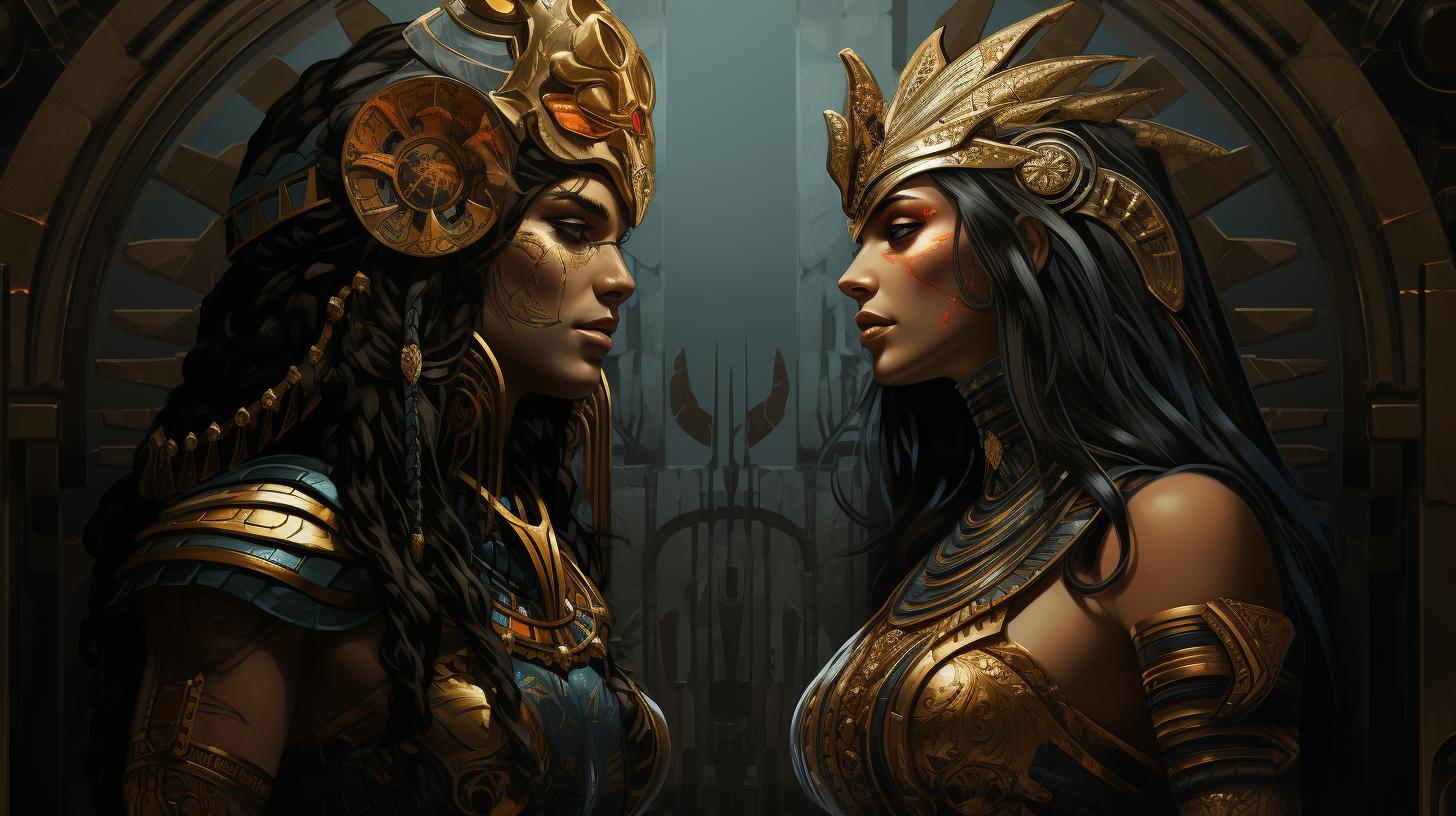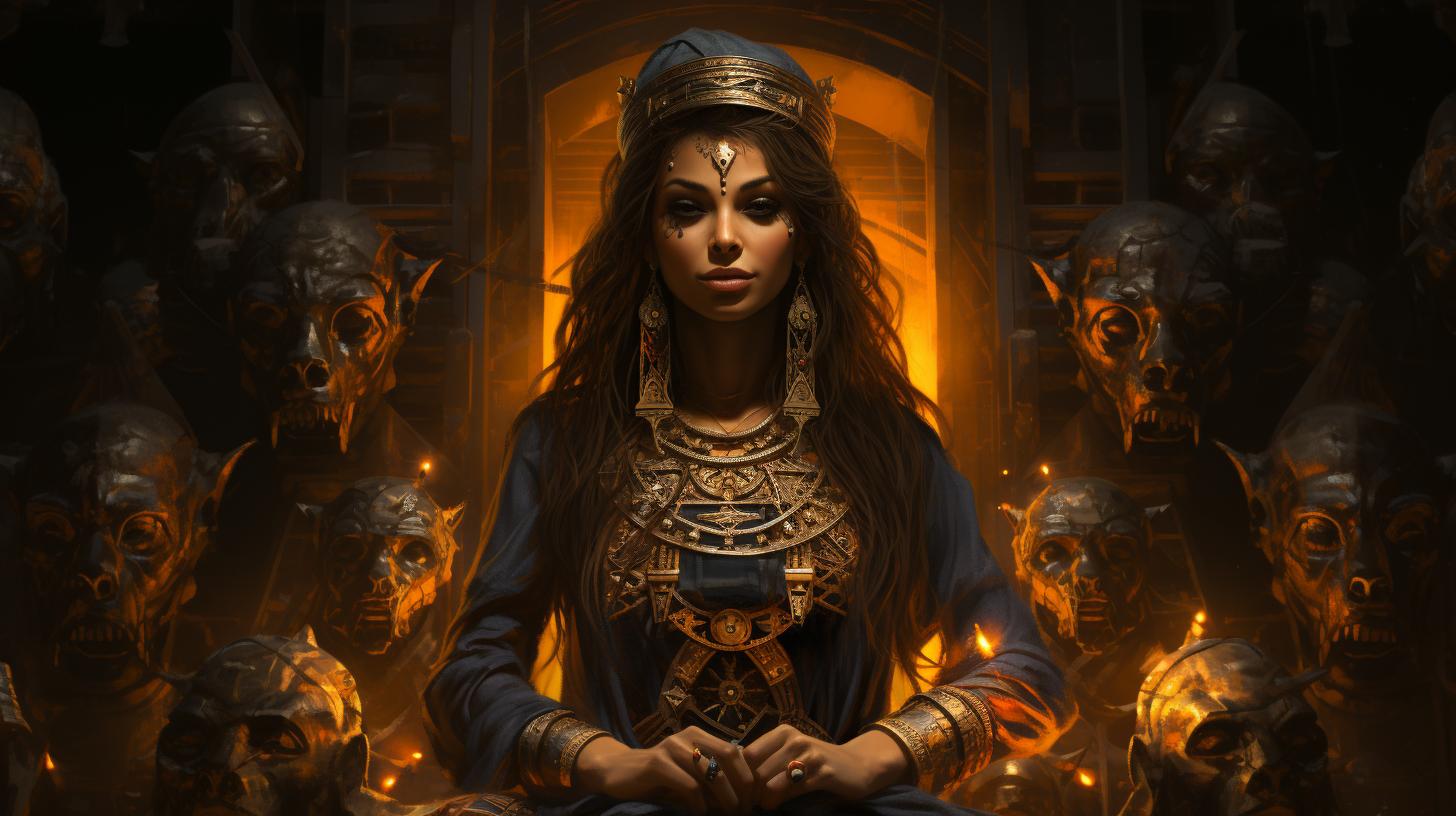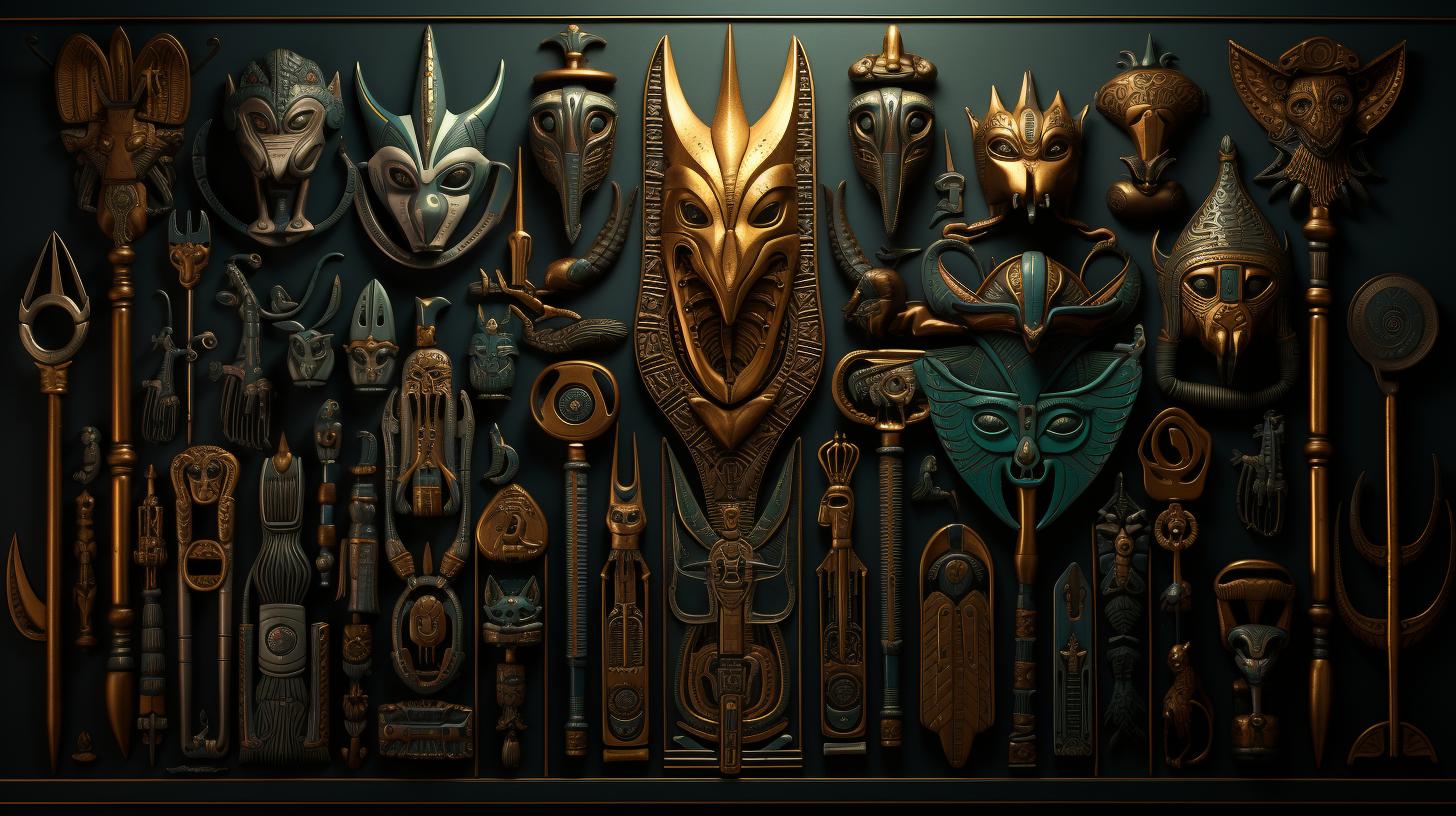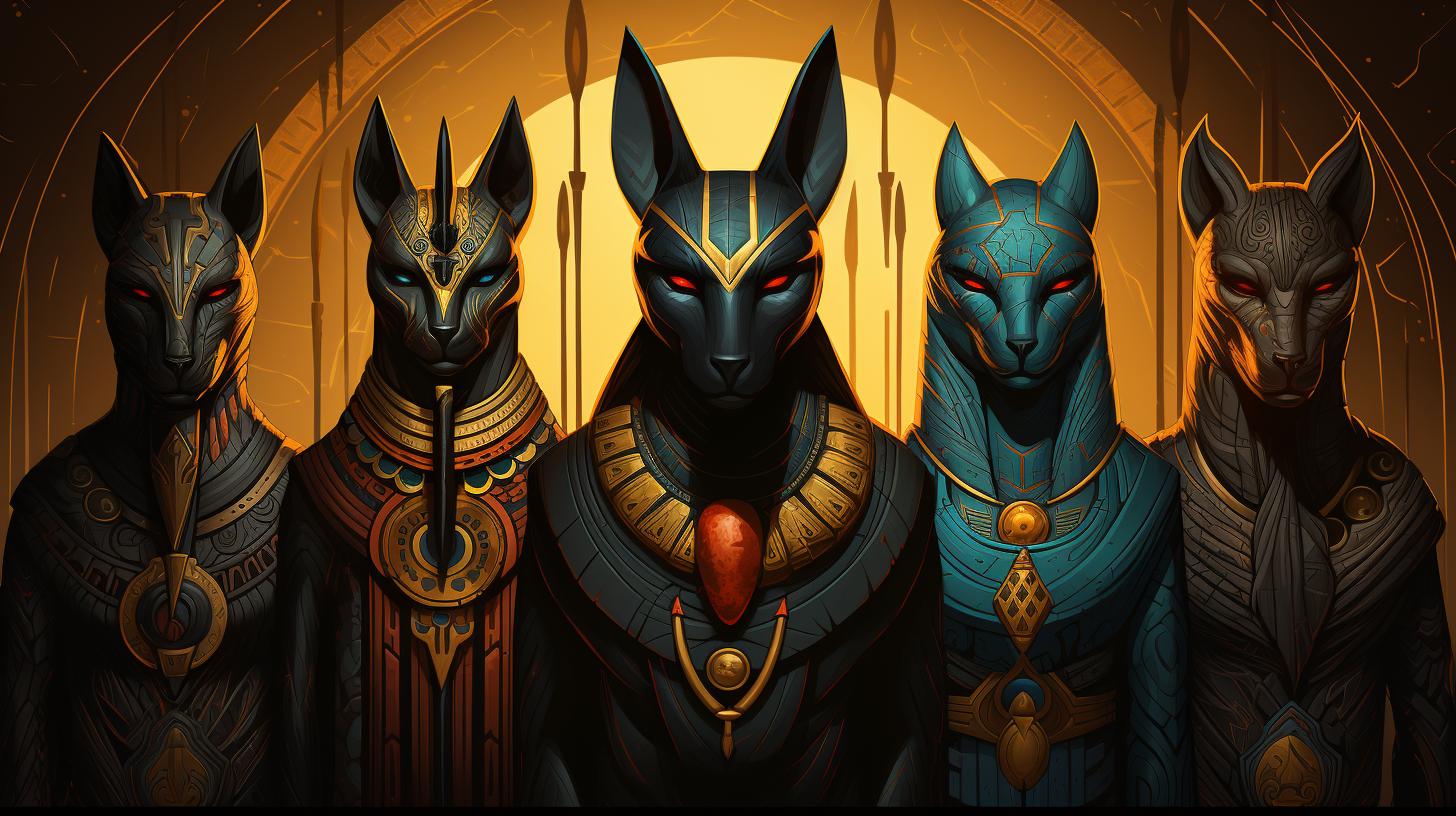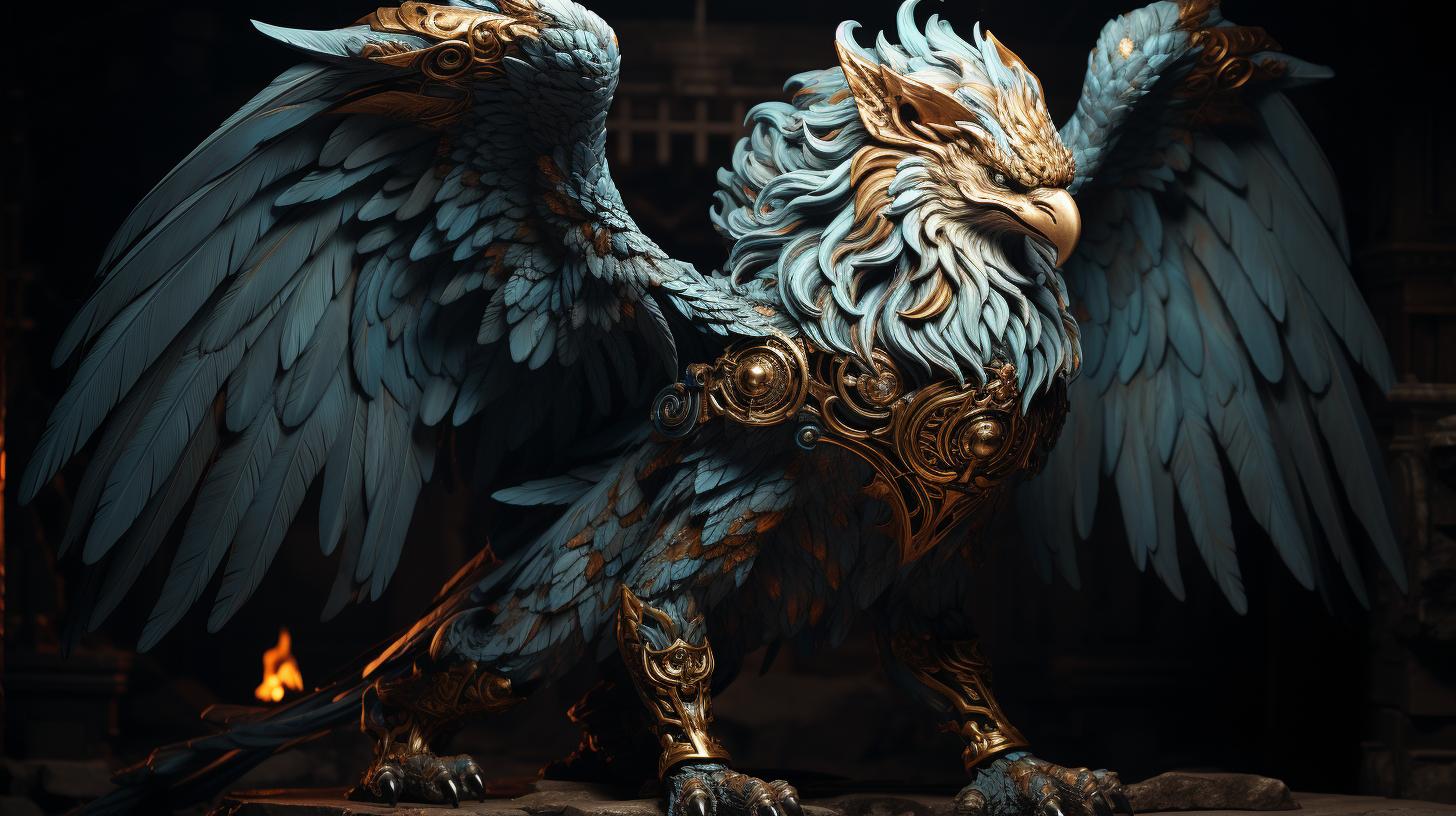Why Egyptian Gods Have Animal Heads: Unveiling the Symbolism and Significance
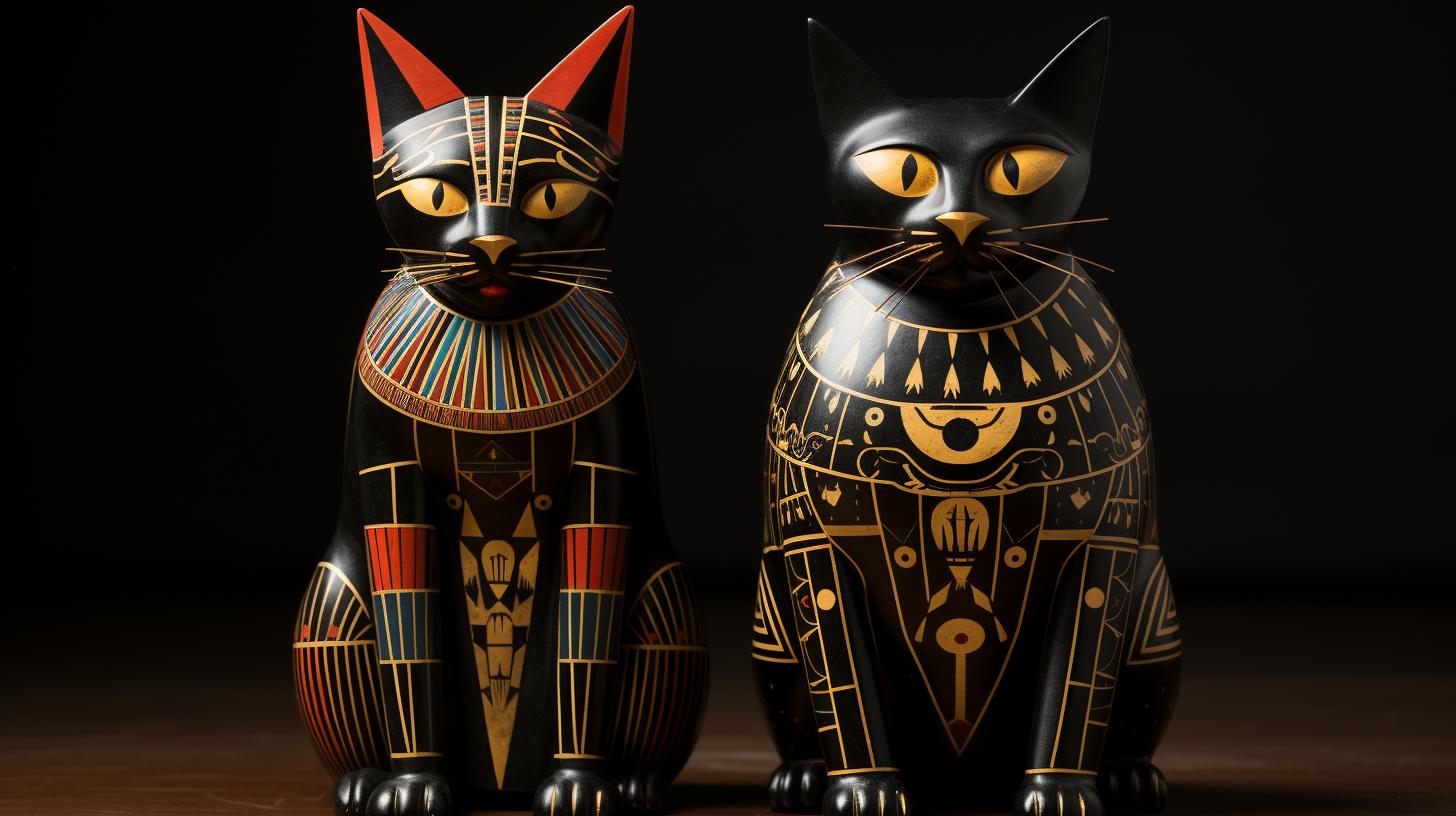
The ancient Egyptian gods depicted with animal heads hold deep symbolic meaning. These representations served to convey their specific powers and personalities. The lion-headed goddess Sekhmet, for instance, symbolized her ferocity and strength, while Anubis, with his jackal head, represented his role as the god of the dead.
These animal-headed deities, such as the falcon-headed Horus and the ibis-headed Thoth, were revered in Egyptian culture for their connection to various aspects of life and the divine. Let’s explore the significance of these animal heads in Egyptian mythology.
The Importance of Animal Heads in Egyptian Mythology
In ancient Egyptian culture, the inclusion of animal heads in the portrayal of gods held immense importance. These animal heads served as potent symbols, representing various aspects of the deities’ power and characteristics.
They contributed to the visual language used to convey the essence of each god, establishing a connection between the divine and the natural world.
Symbolism of Animal Heads in Egyptian Gods
The animal heads depicted on Egyptian gods carried deep symbolic meaning.
Each animal was carefully chosen to embody specific qualities associated with the associated deity. For example, the lion head of Sekhmet symbolized ferocity, strength, and the power to protect. It represented her role as a goddess of war and healing.
Similarly, Anubis, the god of the dead, was depicted with the head of a chacal. The chacal’s association with cemeteries and the afterlife made it a suitable representation for Anubis, emphasizing his role as a guide and protector of the deceased.
The Role of Animal Heads in Depicting Gods’ Powers and Characteristics
Beyond their symbolic significance, the animal heads played a crucial role in communicating the specific powers and characteristics of each god. Whether it was the falcon head of Horus, representing his connection to the sky and his role in protecting the pharaoh, or the ibis head of Thoth, symbolizing wisdom and knowledge, these distinct animal features became visual signifiers of divine attributes.
- The falcon head of Horus symbolized his dominion over the sky and his divine duty to protect the ruling pharaoh, connecting him to the concept of royal power and divinity.
- The ibis head of Thoth reflected his association with knowledge, writing, and magic.
As the god of wisdom, he was often depicted with a scribe’s stylus, highlighting his role as the divine patron of intellectual pursuits.
Through the depiction of animal heads, the ancient Egyptians were able to visually differentiate and comprehend the multifaceted roles of their gods.
These representations provided a way to identify and worship specific deities while evoking both reverence and understanding.
Specific Animal Heads and their Meanings in Egyptian Mythology
The ancient Egyptian pantheon featured a diverse array of gods and goddesses, often depicted with animal heads. These animal heads held deep symbolic significance and were linked to specific deities, showcasing their unique qualities and roles within the Egyptian mythos.
Let’s explore the meanings associated with some of the most prominent animal-headed gods:
The Lion Head: Symbolic Representations and Deities
The lion head was closely associated with power, strength, and ferocity. In Egyptian mythology, the lion-headed goddess Sekhmet represented war and healing. Her fierce demeanor and protective nature made her a formidable force on the battlefield and a revered deity of healing.
With her lion head, Sekhmet embodied the strength and authority necessary to overcome adversities.
The Chacal Head: Associations with the Afterlife and Deities
Anubis, the jackal-headed god, held a crucial role in Egyptian mythology as the guardian of the dead and the ruler of the underworld. Considered the embalmer of the deceased, Anubis guided souls through the afterlife and judged their hearts in the Weighing of the Heart ceremony.
The chacal head symbolized the connection between Anubis and the necropolis, as chacals were often seen scavenging near burial sites.
The Falcon Head: Connection to the Sky and Royal Symbolism
Horus, the god of the sky and kingship, was commonly portrayed with a falcon head.
The falcon, with its ability to soar through the heavens, represented Horus’ link to the celestial realm. As a divine protector and the patron deity of the pharaohs, Horus’ falcon head symbolized his role in defending and emulating the rulers of Egypt.
The Ibis Head: Wisdom, Knowledge, and Divine Roles
The ibis-headed god Thoth was revered as the deity of wisdom, knowledge, writing, and magic. With his ibis head, Thoth embodied the connection between the divine realm and earthly wisdom.
In ancient Egyptian culture, the ibis was associated with the sacred art of writing, making it a fitting representation for the god of wisdom and the keeper of cosmic order.
Other Animal Heads and their Significance in Egyptian Gods
In addition to the lion, chacal, falcon, and ibis heads, other animal heads played essential roles in Egyptian mythology.
For example, the crocodile head was associated with the god Sobek, representing primal power and fertility. The ram-headed god Khnum symbolized creation and pottery. These diverse animal archetypes further enriched the pantheon, each embodying distinct attributes and responsibilities.
The specific animal heads of the Egyptian gods carried profound symbolism, conveying their unique qualities and roles within the mythology. From the lion’s ferocious strength to the jackal’s association with the afterlife, these animal-headed deities served as iconic representations of the gods’ powers and characteristics, reflecting the complex beliefs and values of ancient Egyptian culture.
Rationale behind Animal Heads in Egyptian Mythology
The animal-headed deities in Egyptian mythology were not simply representations for artistic purposes; they held profound symbolic significance and were rooted in the belief system of ancient Egyptians. Two main rationales can be identified for the presence of animal heads in the depictions of gods: the belief in original animal-headed gods and their shapeshifting abilities, as well as the close connection between gods and animals in ancient Egyptian culture.
Belief in the Original Animal-headed Gods and Shapeshifting Abilities
The ancient Egyptians believed that the gods were originally created with animal heads, which served as physical manifestations of their divine powers and attributes. These animal-headed gods possessed the ability to change their forms and shape-shift into animals or even humans, allowing them to interact with mortals in various ways.
The shapeshifting abilities of the gods were seen as a reflection of their vast power and their ability to transcend the boundaries of the mortal world.
Connection between Gods and Animals in Ancient Egyptian Culture
Animals held a significant place in the religious and cultural practices of ancient Egyptians.
They were believed to be closely linked to the gods and possessed divine qualities. The Egyptians saw animals as living embodiments of specific deities or as vessels through which the gods could manifest themselves.
By associating the gods with animal heads, Egyptians were highlighting this interconnectedness between the divine and the animal world. The animal characteristics imbued the gods with the unique qualities and powers associated with each animal, reinforcing their divine nature.
The animal heads also represented a deeper understanding of the gods’ roles and connections to specific aspects of life and the natural world. They conveyed the god’s dominion over certain realms or elements, and their ability to protect, guide, or embody certain virtues.
This rationale behind animal heads in Egyptian mythology demonstrates the intricate beliefs and spiritual practices of the ancient Egyptians, as they sought to comprehend the divine and the forces that governed their daily lives.
Cultural Significance of Animal-headed Gods in Ancient Egypt
The animal-headed gods in ancient Egyptian mythology held immense cultural significance. Their unique representations fueled reverence and worship among the Egyptian population, leading to the establishment of dedicated temples and religious practices.
Even today, the legacy of these animal-headed gods continues to captivate and fascinate people around the world.
Reverence and Worship of Animal-headed Deities
Ancient Egyptians deeply revered the animal-headed gods, considering them divine beings with extraordinary powers and abilities. The symbolic representations of these gods, with their human-like bodies and animal heads, served as a visual reminder of their unique characteristics and attributes.
Followers offered prayers and performed rituals to appease these deities, seeking their blessings, protection, and guidance in various aspects of life.
These animal-headed gods were often associated with specific domains, such as fertility, war, wisdom, or protection.
People believed that by worshiping and honoring these gods, they could gain favor and assistance from the divine realm. Temples dedicated to these deities became important centers of religious activity, where priests and priestesses conducted ceremonies and rituals, ensuring the gods’ ongoing veneration.
Temples and Practices Dedicated to Animal-headed Gods
The establishment of temples dedicated to the animal-headed gods played a crucial role in the cultural and religious fabric of ancient Egypt. These temples served as sacred spaces where devotees congregated to offer prayers, make offerings, and participate in religious ceremonies.
The temples were often grand and architecturally impressive, reflecting the importance and significance of the deities they honored.
The priests and priestesses within these temples played critical roles in maintaining the religious traditions and practices associated with the animal-headed gods.
They were responsible for performing daily rituals, interpreting divine messages, and conducting ceremonies on behalf of the community. The rituals conducted within these temples were believed to bridge the gap between the mortal world and the divine realm, fostering a strong connection and rapport with the animal-headed deities.
Legacy and Continuing Fascination with Egyptian Animal-headed Gods
The legacy of the animal-headed gods in ancient Egypt has endured over millennia, captivating the imagination and curiosity of people worldwide. From ancient texts and artifacts to modern adaptations in art, literature, and media, the influence of these extraordinary deities can still be seen and felt.
The symbolism and mystery surrounding the animal-headed gods continue to inspire contemporary artists, scholars, and enthusiasts, fueling ongoing research and exploration of ancient Egyptian mythology. Their distinctive representations and the stories associated with them showcase the richness and complexity of ancient Egyptian culture and beliefs.
The fascination with Egyptian animal-headed gods also extends to tourism, with countless individuals visiting ancient Egyptian sites and museums to witness the awe-inspiring remnants of this ancient civilization. The impact of these gods on popular culture, from movies to books, further perpetuates their allure and keeps the ancient Egyptian heritage alive in the modern world.
As we delve deeper into the cultural significance of animal-headed gods in ancient Egypt, we uncover a profound reverence and worship that shaped the religious practices and beliefs of that era.
The enduring legacy of these gods stands as a testament to the enduring power of mythology and its ability to captivate our imaginations, even in the present day.
.











